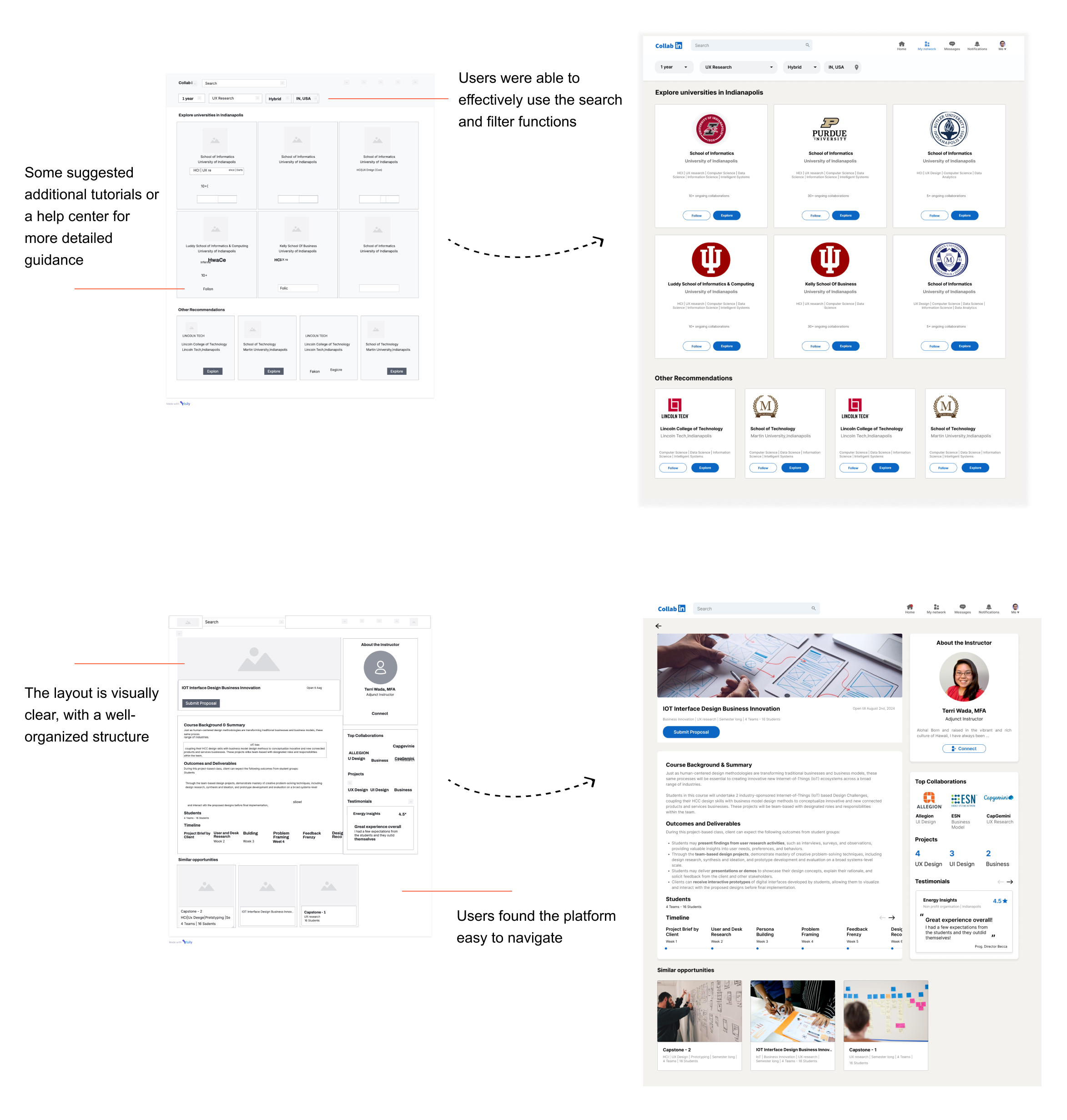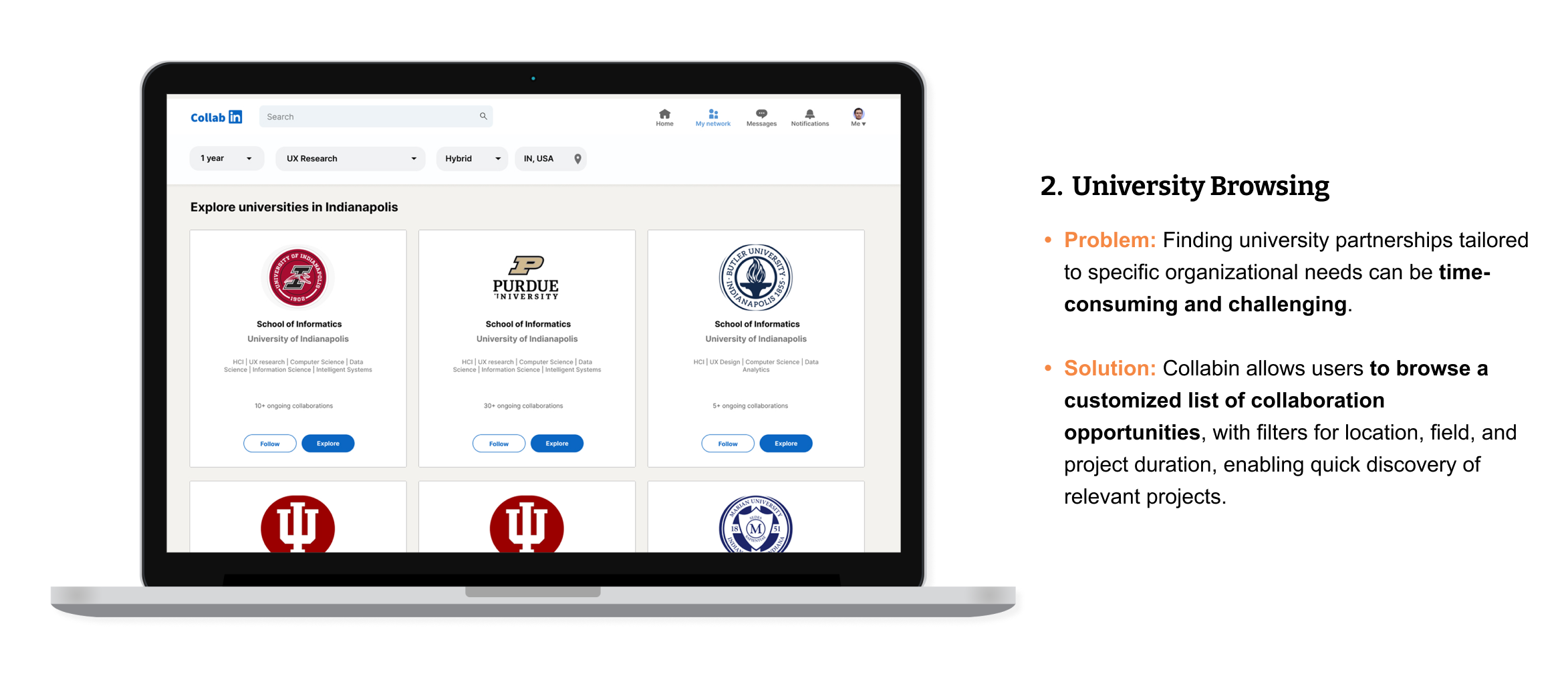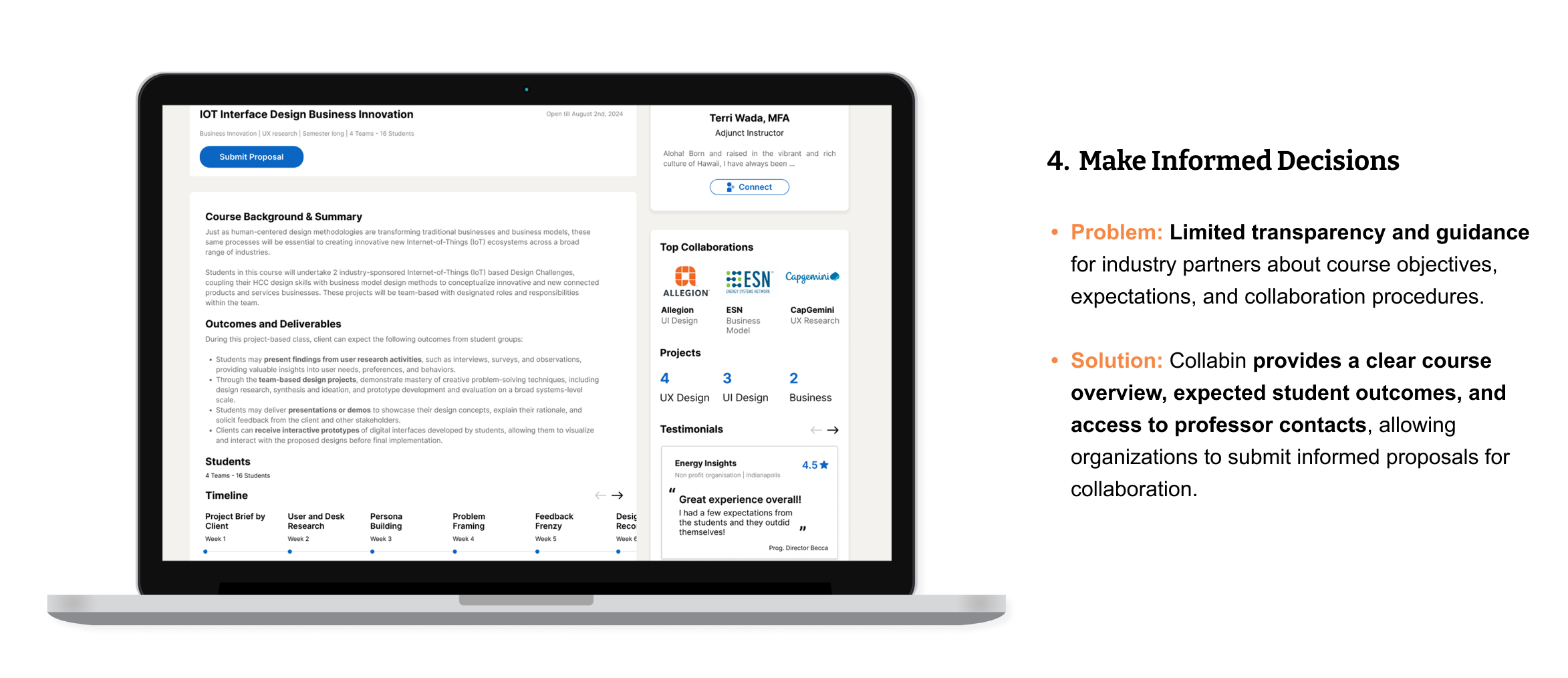
As I explored the world of higher education and industry collaboration, I noticed how often potential partnerships fell through the cracks. Project managers searched endlessly for the right academic partners, only to face mismatched skills, unclear expectations, and little insight into university capabilities. Students, too, missed chances to apply their talents in meaningful ways. I envisioned a centralized platform, one that bridges these gaps, sparks collaboration, and creates lasting impact for both students and industry.

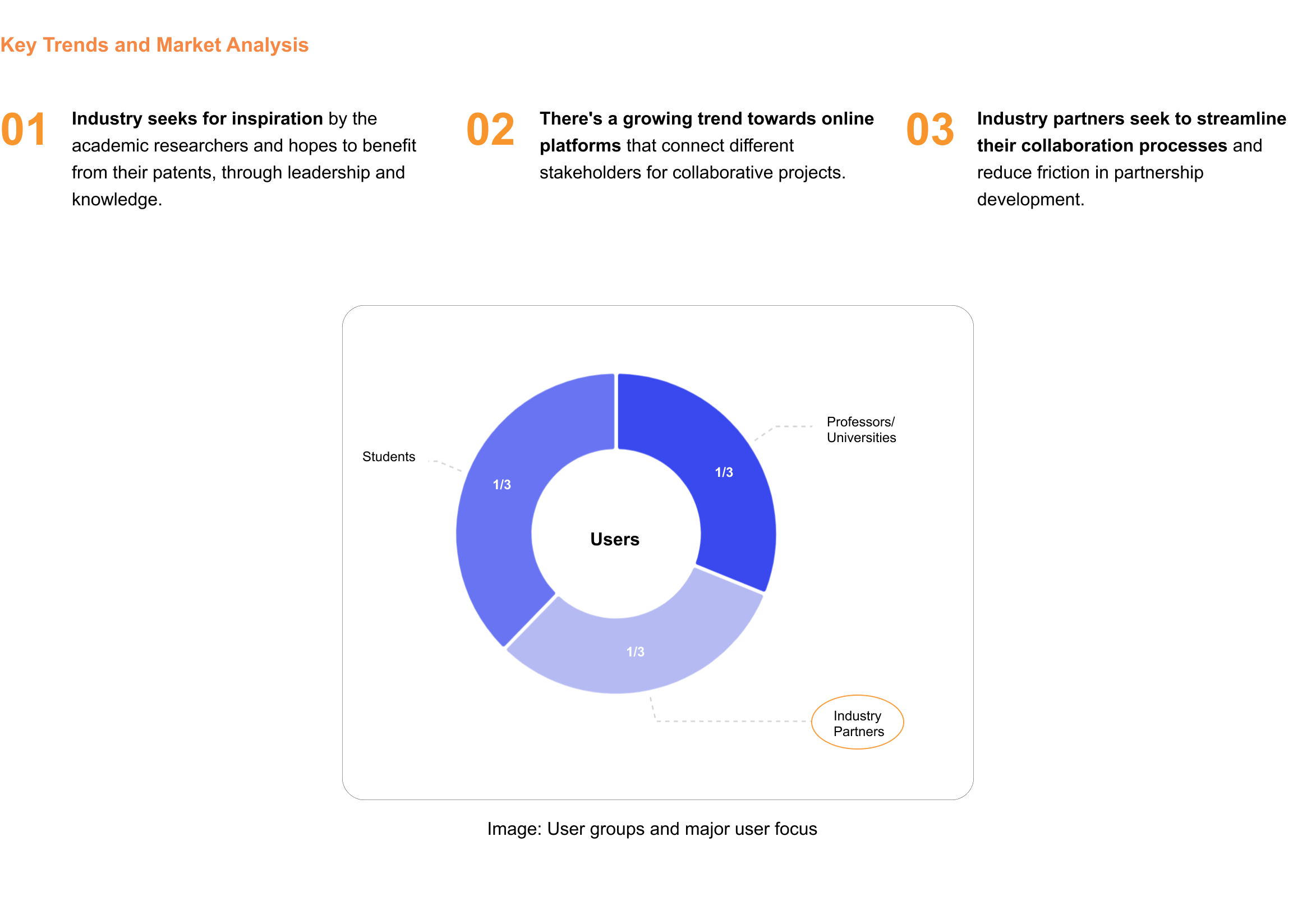
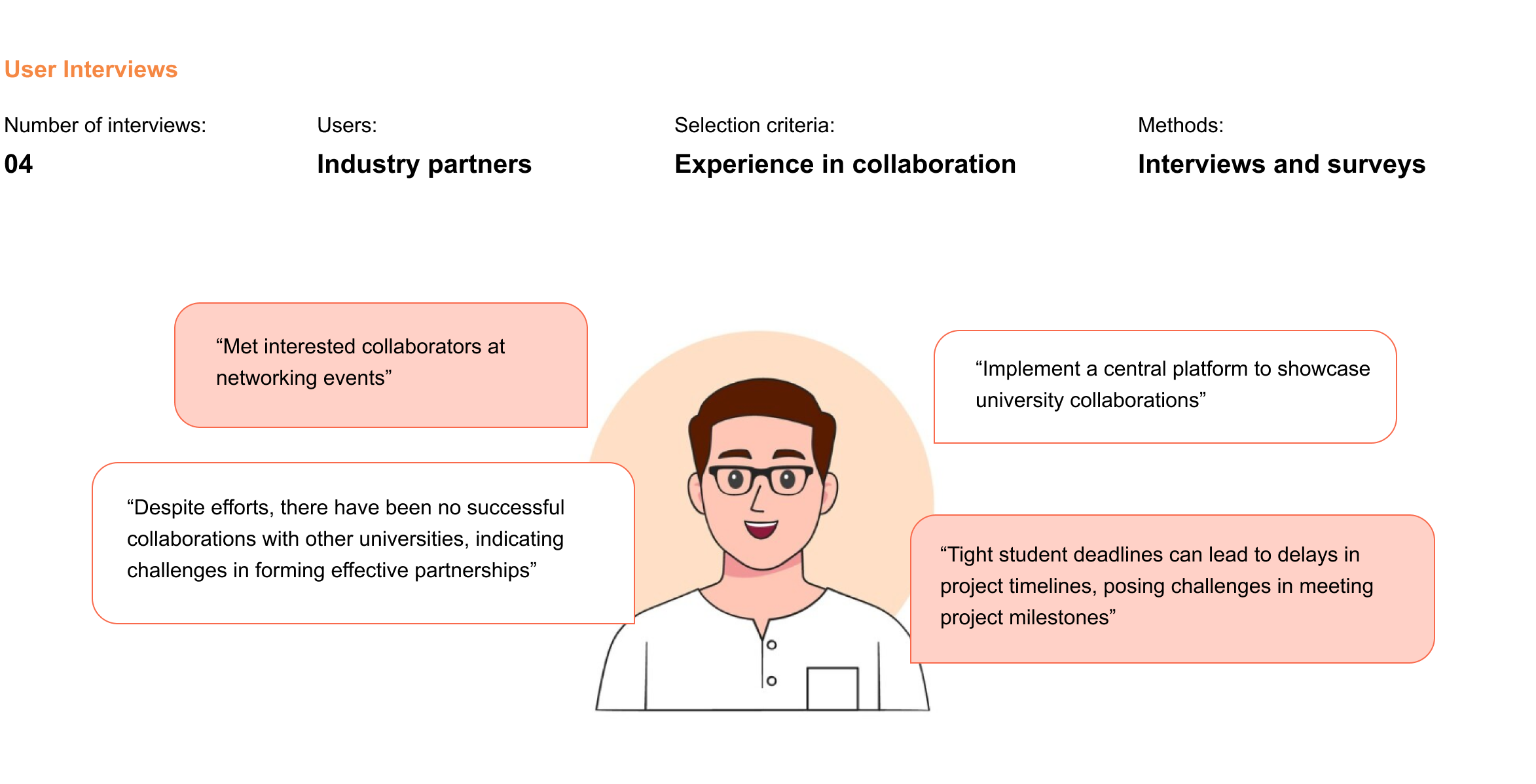

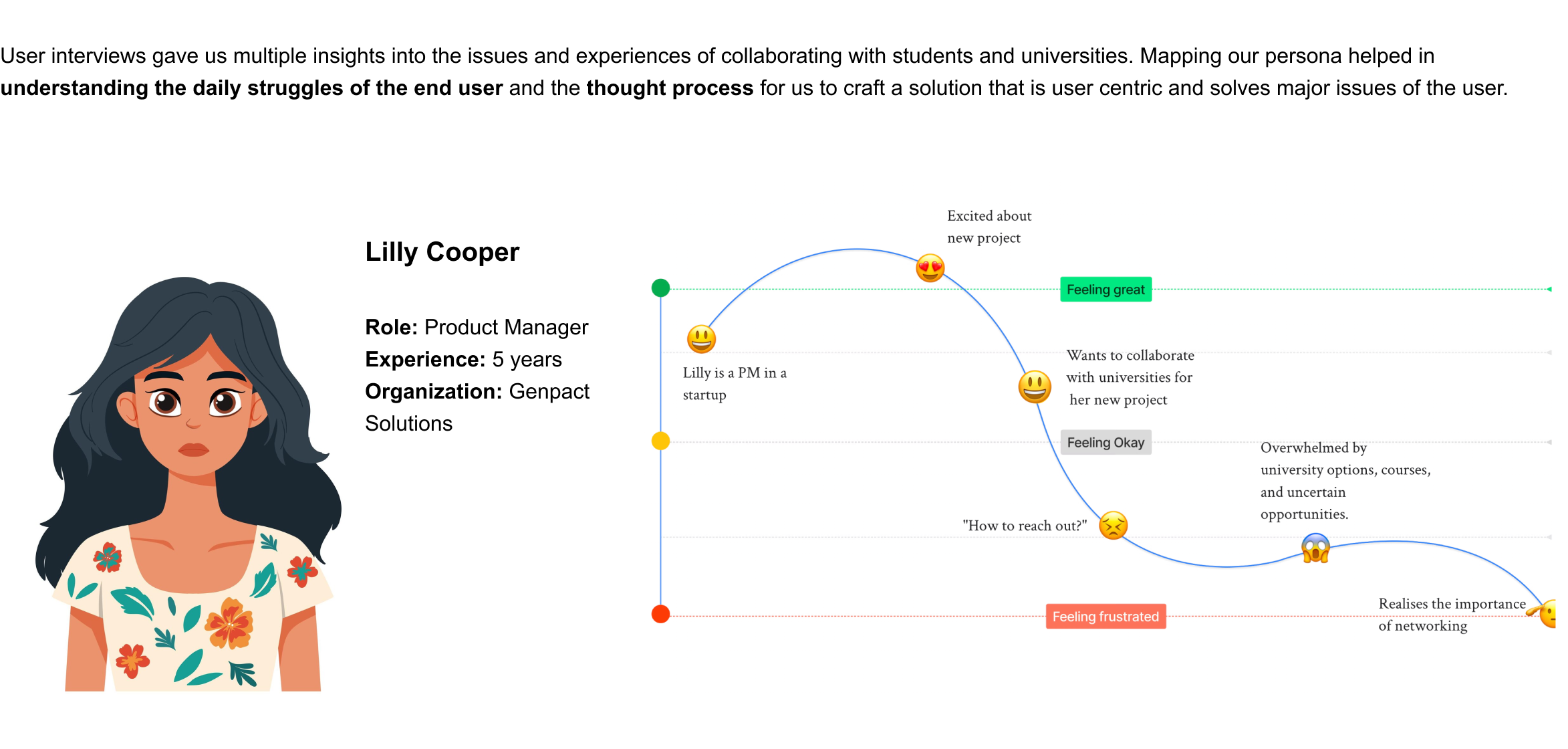
Project managers and clients struggle to identify suitable academic partners due to mismatched skillsets, expectations, and limited information on past projects. This leads to missed collaboration opportunities and inefficient outcomes.
Through my research and analysis, including in-depth literature reviews and interviews with stakeholders, I identified key challenges in the collaboration process between clients, universities, and students. These challenges include difficulty in articulating value propositions, meeting new universities or potential partners, and ensuring skill alignment. Based on these insights, I brainstormed potential solutions that could address these pain points effectively.




